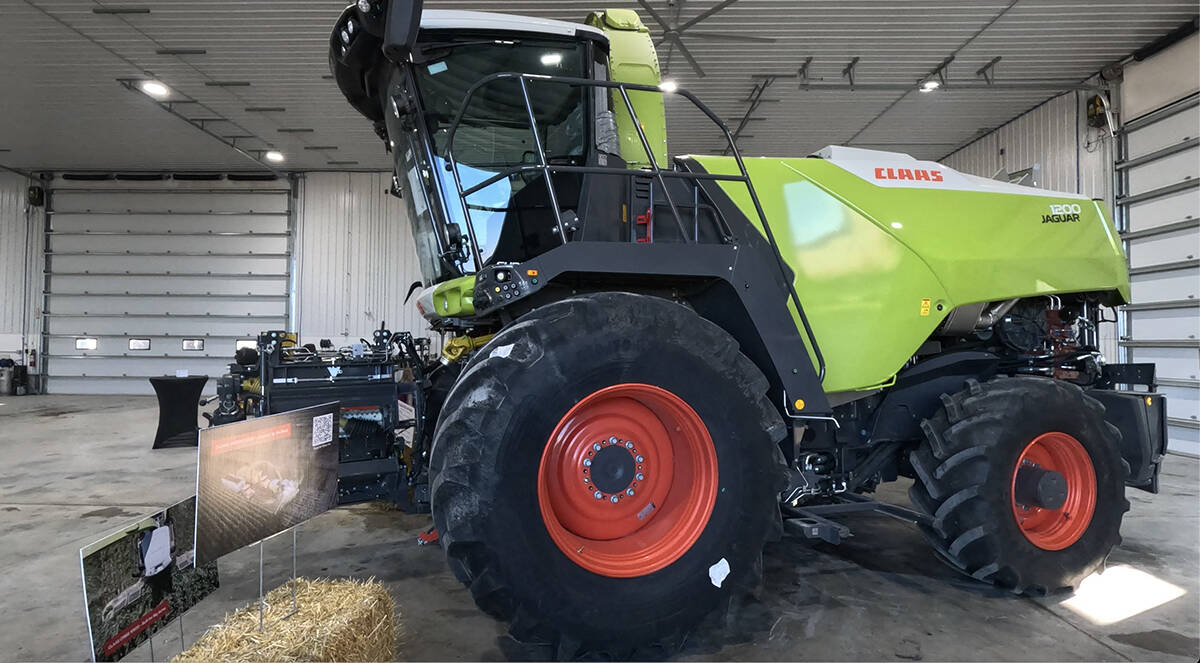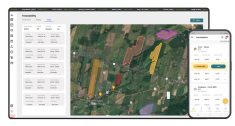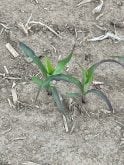Farmers strive to protect the crop all year. Why stop once it’s in storage?
It’s a question posed by Canadian grain monitoring systems company Bin-Sense. During a virtual Canada’s Outdoor Farm Show panel session, Anthony Wideman, a Listowel-area grain grower and representative for Bin-Sense dealer Auxilia Ventures, and Warren Feist, representing Bin-Sense from Saskatoon, shared perspectives on grain monitoring technologies – how they work, why they are useful, and best management practices to get the most out of such tools.
Why it matters: Spoiled or over-heated grain can ruin what might have been an otherwise good harvest, not to mention the bin itself.
Read Also

Claas brings 1000 Series SP forage harvesters to Canada
In mid-August, Claas unveiled its new line of Jaguar forage harvesters at an event in Visalia, California, deep in the heart of that state’s dairy region.
The bottom line for Wideman is managing investment risk. The risk of spoilage never leaves, he says, and monitoring grain while in storage equates to “insuring grain for pennies per bushel.”
Feist adds the frequency with which growers have to harvest in adverse weather conditions exacerbates the risk of spoilage in storage.
Cases are not uncommon where monitoring could have prevented major financial and production headaches. Feist says images of “red hot” bins are common during the late summer and autumn, at least on the Prairies and American Midwest. Even small amounts of heat can spur significant losses, particularly in more volatile crops like canola.
With enough heat, fire damage can cost growers both the grain inside a bin and the bin itself.
“I’ve seen bins being jackhammered,” says Feist. “A lot of times after the bin is full and the harvest is taken off, it’s a kind of forget it mentality… It is an investment and monitoring it is a very important thing.”
Bins come in all sizes. By consequence, so does the cost of installing grain monitoring systems.
Both Bin-Sense representatives believe the main question growers must consider is whether they want to monitor for temperature, or temperature as well as moisture.
Over a 10-year period, costs range from three to six cents per bushel. The dual-metric system is more costly than temperature reading alone, with the latter used more widely.
In either case, Feist says another consideration is deciding whether a monitoring system should work automatically or whether some manual work is acceptable.
With the former, the system can automatically notify growers if temperature or moisture levels have surpassed a predetermined threshold, or even indicate abnormal changes within the bin at pre-threshold levels. For example, it could indicate when the temperature within a bin jumps from 22 to 28 C in a week. With a more manual system, growers have to visit each bin to wirelessly download information.
Whether one option is better than the other, they say, depends on the characteristics of each business, as well as the people involved.
“A monitoring system is only as good as the person who is watching that grain,” says Feist.
“Things can happen in a very short period of time.”















